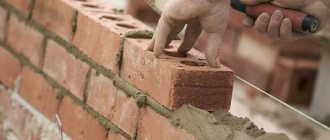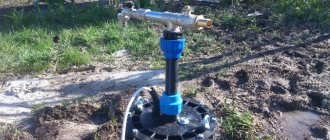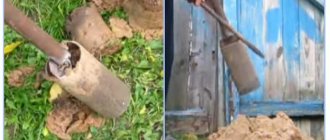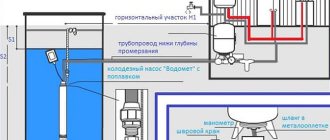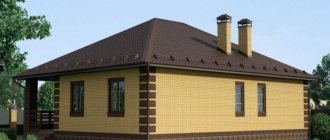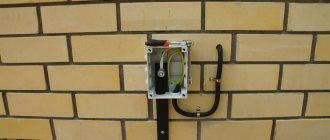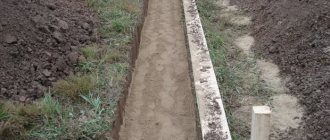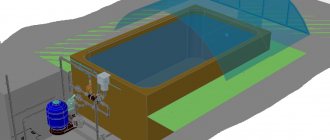The proportions of cement for different types of mortars will be of interest primarily to non-professional developers and repairmen. Professional builders, as a rule, prepare concrete solutions “by eye”, and most often order their delivery to the nearest concrete plant.
Private developers often prefer to save on “anything and everything,” so the proportions of cement in mortars for various purposes will be useful primarily for those who prepare concrete building materials on their own.
Main types of mortars
Depending on the purpose, cement-based mortars are divided into the following widely used types:
- Heavy concrete of different grades.
- Masonry mortars.
- Plaster solutions.
- Solutions for the construction of floor screeds.
- Repair solutions.
The listed different building materials have one common factor - all of the listed building materials contain cement, which is a “binder” that has no analogues.
Considering that readers of the article will find practical information of the following order useful: the proportions of sand and cement for screed, the proportions of sand and cement for concrete, the proportions of cement for screed, the proportions of cement for masonry, as well as the ratio of sand and cement for plaster, we will consider it step by step, indicating specific numbers.
Freezing
The hardening time of the cement coating depends on the class of concrete being strengthened, temperature and humidity.
| Concrete strength class | Temperature, °C | Humidity, % | Freezing time, hours |
| AT 10 | 15-25 | 60-80 | 10 |
| B15 | 15-25 | 60-80 | 7 |
| B25 | 15-25 | 60-80 | 4 |
You can step on the reinforced surface within a day. It will gain average hardness after a week, maximum hardness after 28 days.
Correctly performed treatment with cement laitance, in compliance with technological requirements, extends the service life of concreted and plastered surfaces and brickwork. Keeps them even and smooth. Improves water-repellent properties.
The ratio of sand and cement for floor screed
Floor screed can be used as a basis for laying a finished floor made of boards, plywood, laminate, parquet, solid boards, USB boards, ceramic tiles, mosaics, porcelain tiles and soft materials (carpet, linoleum, carpet runners and rugs).
Floor screed is also used as a “finish” floor covering in utility buildings and rooms with high humidity: bathrooms, bathrooms, saunas, baths and kitchens.
On the Internet and in private conversations, you can read and hear a variety of options on how to properly mix cement with sand in proportions for floor screed. At the same time, there are practical rules and proportions for preparing the solution that can be applied to the vast majority of cases.
For 99% of screed options, it is recommended to use a cement-sand mortar of grade M150 or M200 based on the most affordable cement grade TsEM I 42.5N PTs or TsEM I 52.5N PTs. The outdated designations of these brands of parliaments are M400 and M500.
The ratio of cement and sand for the floor can be seen in the table:
| Brand of solution | M400 cement proportion | Sand proportion | Solder proportions |
| M150 | 1 | 3,0 | 1,3 |
| M200 | 1 | 2,5 | 1,0 |
| Brand of solution | M500 cement proportion | Sand proportion | Solder proportions |
| M150 | 1 | 4,0 | 1,3 |
| M200 | 1 | 3 | 1,0 |
How to mix concrete by hand without a concrete mixer in 8 steps
The concrete mixer does an excellent job of mixing concrete (also called “concrete mixer”), thoroughly mixing components such as cement, sand and crushed stone, and giving good results. But is it possible to mix concrete by hand without a mixer? The answer is yes, but with a little effort and caution.
You may need to make a concrete mix to install gates, fence posts or foundations. All you need is materials, a shovel, a couple of buckets and a piece of film or old iron to protect the soil and mortar from excess dust and dirt.
How to mix concrete?
Spread plastic wrap over the ground or something more durable.
Pour crushed stone and sand onto the film.
Cement on top of a pile of sand and rubble.
Mix the materials with a shovel. Create a new pile nearby and repeat several times.
Spread the pile out and create a crater in the center. Fill with water.
Pour the mixture into the center of the pile and mix with water.
What is cement?
It is the binding ingredient of sand and coarser aggregate such as crushed stone to make a composite material called concrete. Separately, these components have no real strength, but when they are mixed they create a strong material. The cement simply glues the filler together, and the stone gives the concrete compressive strength.
There are several types of cement. For example, Portland cement and slag cement.
Portland cement is made by baking limestone in kilns and grinding clinker.
Blast furnace slag cement is produced from waste from the metallurgical industry.
Crushed stone is produced in quarries of crushed foam rock, and then the result is sorted by passing through a sieve. In theory, crushed stone should make concrete better than rounded stone - gravel, due to the sharp angular edges.
Concrete mixing solutions
B20 / M250
Concrete mixture grade M250 (general purpose) is suitable for low-rise construction of all types:
production of strip and pile foundations,
concrete floors on reinforced frame,
paths and parking areas
The components are mixed by volume without weight. Ideally crushed stone with a size of 15-20 mm.
Table of characteristics of popular concrete mixtures
According to GOST 26633-91 “Heavy and fine-grained concrete.
How much water will concrete need?
The maximum permissible volume of water that must be added to cement is 0.55 times the weight of the cement itself. Below is the formula for a 50 kg bag of cement:
50 x 0.55 = 27.5 kg / at a temperature of 20 degrees Celsius 27.5 kg = 27.5 l.
The mixture should not be too thin and should be able to support itself without running.
A big mistake when making concrete mix at home is adding too much water.
Water increases mobility, but reduces the strength of the concrete itself, so it is necessary to observe W/C (optimally 0.4 - 0.6 = 40 - 60% of the volume of cement), excess water creates pores that reduce strength.
To increase mobility and workability, I advise you to use plasticizers.
What does strength class B20 mean?
This means that class B20 concrete with a specified strength of 25.69 MPa will in 95% of cases withstand a compressive force (more correct pressure) of 25.69 newtons per square millimeter (2.6197 kgf / mm²) without failure.
So, theoretically, for a cube of size 150 × 150 and thickness 150 mm:
Area = 150 mm x 150 mm = 22500 mm².
The total compressive force that concrete will withstand without crushing is calculated by the formula:
25.69 MPa x 22500 cm² = 578025 newtons. (pressure x area = force).
578025 newtons / 9.80665 MPa = 58,942.1464 kgf/cm² or 59 tons per square 15 cm by 15 cm.
In reality, a concrete slab would crack with much less load than this value. This is because the bottom plane of the slab is not supported equally under each point. This actually refers to the compressive strength of a concrete cube of 150 mm sides obtained from the testing equipment.
Tools for mixing concrete by hand
Construction shovel or construction trowel
Three construction buckets of 20 liters each. One for cement, one for sand and crushed stone and the last one for water. The cement bucket must be kept dry and do not use it for other components.
Ratio of cement and sand for concrete
The concept of “concrete” combines a number of different building materials prepared on the basis of different cements and different fillers. Without going into details, it is worth noting that in private construction, in 99.9% of cases, heavy concrete of certain grades is used.
Therefore, information about special types of concrete will be educational, but has no practical significance. Therefore, within the framework of this article, the ratio of the main components of heavy concrete of popular grades, which are widely used in private construction, is given.
The main brands of heavy concrete include the following names: M150, M200, M300 and M400. These are the most popular options, covering 99.9% of the needs of private developers. The following table of the ratio of components that must be used to prepare 1 m3 of solution tells how to prepare the indicated grades of concrete.
| Concrete grade | Cement CEM I 42.5N PC, kg | Sand, kg | Crushed stone, kg | Water, l |
| M150 | 215 | 735 | 1135 | 190 |
| M200 | 255 | 715 | 1125 | |
| M300 | 335 | 670 | 1105 | |
| M400 | 420 | 625 | 1085 |
| Concrete grade | Cement CEM I 52.5N PC, kg | Sand, kg | Crushed stone, kg | Water, l |
| M150 | 190 | 755 | 1135 | 190 |
| M200 | 225 | 735 | 1125 | |
| M300 | 290 | 705 | 1105 | |
| M400 | 355 | 675 | 1085 |
The consumption of components per 1 cubic meter of concrete is a generally accepted norm and generally accepted equivalent. If, according to construction conditions, it is necessary to prepare an amount of concrete less than 1 m3, you can take the material consumption per 1 m3 as 100% and decide the proportion to find out the required value in kg.
For example. It is necessary to mix concrete grade M150 in an amount of 0.3 m3 based on cement M400 1 m3 - 100%, 0.3 m3 - X%. We solve the proportion: 0.3x100/1=30%(0.3). Multiplying the tabulated values of the amount of materials by 0.3, we get: 64.5 kg of cement, 220.5 kg of sand, 340.5 kg of crushed stone and 57 liters of water, required to prepare M150 grade concrete based on M400 cement.
Hardening of the mixture
The finished solution begins to set quite quickly. And then the process of hardening of the mixture is already irreversible. Therefore, it is worth considering some nuances in your work:
- The setting speed depends on the air temperature. The best calculated value is 20 degrees, at which the entire process takes 2 hours. If the temperature is close to 0, setting may take a day; in hot weather, on the contrary, the solution will set in 15-20 minutes.
- Air humidity will prevent rapid dehydration of the mixture. High humidity will reduce the likelihood of cracks and make the hardening process of the solution more uniform. Dryness and heat accelerate hardening, but the material will no longer have strength.
- Avoid exposure of the solution to strong winds and drafts, as well as direct sunlight. It is very important that the mixture hardens evenly so that the coating turns out without defects, because correcting the situation afterwards is very difficult.
Following these recommendations will help you avoid mistakes and achieve the desired result.
Cement proportions for masonry
In general, mortars for laying brick, foam block, cinder block, shell rock or limestone include the following components: cement CEM I 32.5N PC (M300) or cement CEM I 42.5N PC (M400), fine sand, lime and water.
In this case, lime is added to give strength and “warmth” to masonry joints and is an “optional” component. However, if the developer wants to obtain high quality (strength, durability and thermal insulation) of the masonry, it is worth going to small additional costs and preparing a lime mortar for masonry in accordance with the table of the number of components per 1 m3 of masonry mortar:
| Brand of masonry mortar | Cement CEM I 42.5N PC (M400), kg | Sand, kg | Lime, kg | Water, l |
| M50 | 170 | 1445 | 205 | 230 |
| M75 | 235 | 1395 | 165 | |
| M100 | 290 | 1365 | 133 | |
| M150 | 380 | 1305 | 75 |
| Brand of masonry mortar | Cement CEM I 32.5N PC (M300), kg | Sand, kg | Lime, kg | Water, l |
| M50 | 220 | 1410 | 175 | 250 |
| M750 | 305 | 1365 | 125 | |
| M100 | 370 | 1305 | 85 | |
| M150 | 485 | 1235 | 15 |
The ratios of cement and sand given in the table for laying brick, cinder block, foam block, shell rock and limestone, using the “proportions” technology, can be recalculated for volumes of material smaller than 1 m3.
Additives for colored seams
Sometimes construction work must, in addition to the main one, also have an aesthetic, decorative result. This is where color additives come to the rescue. Their palette is extensive and they have the following features:
- the ability to improve appearance, avoid gray color;
- the ability to maintain a single style with a building, a house;
- does not affect the mixing technology, does not add difficulties to the work;
- it is possible to make a solution at home;
- resistance to external factors ensures the durability of the color coating.
If you need to make a solution of a bright color, then it is better to use white cement instead of gray.
How to make seams white
White color can emphasize the texture and volume of structures. Therefore, it is often used during masonry to give expressiveness to the building.
